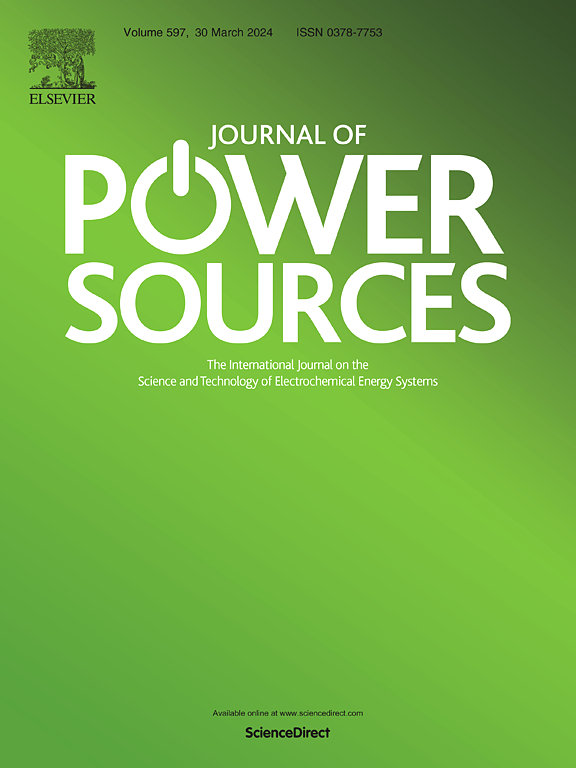Construction of core-shell structured CuS@CoS2 via ion exchange method for flexible all-solid-state asymmetric supercapacitors
IF 8.1
2区 工程技术
Q1 CHEMISTRY, PHYSICAL
引用次数: 0
Abstract
With the rapid advancement of energy storage technologies, there is growing demand for high-performance flexible supercapacitors. However, the practical application of metal sulfide electrodes remains hindered by structural instability, sluggish ion/electron transport, and complicated synthesis processes. In this study, an innovative core-shell structured CuS@CoS2 material is fabricated through an optimized ion-exchange method. The unique architecture and large specific surface area provide abundant active sites and facilitate rapid electrolyte ion diffusion while effectively accommodating volume variations during charge-discharge cycles. Electrochemical characterization demonstrates exceptional performance, including a remarkable specific capacitance of 937.2 F g−1 and 72.4 % capacitance retention after 10,000 cycles at 5 A g−1. The assembled flexible all-solid-state asymmetric supercapacitor with activated carbon (AC//CuS@CoS2) achieves outstanding energy/power densities (88.9 Wh kg−1, 32,000 W kg−1) and maintains 73.31 % capacitance after 10,000 cycles at 6 A g−1. These superior properties underscore the great promise of core-shell CuS@CoS2 composites for next-generation flexible energy storage devices.
柔性全固态非对称超级电容器核壳结构CuS@CoS2的离子交换法构建
随着储能技术的快速发展,对高性能柔性超级电容器的需求日益增长。然而,金属硫化物电极的实际应用仍然受到结构不稳定、离子/电子传输缓慢和合成工艺复杂的阻碍。在本研究中,通过优化的离子交换方法制备了一种创新的核壳结构CuS@CoS2材料。独特的结构和较大的比表面积提供了丰富的活性位点,促进了电解质离子的快速扩散,同时有效地适应了充放电循环过程中的体积变化。电化学表征显示了优异的性能,包括显著的比电容为937.2 F g−1,在5 a g−1下循环10,000次后电容保持率为72.4%。组装的柔性全固态不对称活性炭超级电容器(AC//CuS@CoS2)具有出色的能量/功率密度(88.9 Wh kg−1,32,000 W kg−1),在6 A g−1下循环10,000次后保持73.31%的电容。这些优越的性能强调了核壳CuS@CoS2复合材料在下一代柔性储能设备中的巨大前景。
本文章由计算机程序翻译,如有差异,请以英文原文为准。
求助全文
约1分钟内获得全文
求助全文
来源期刊

Journal of Power Sources
工程技术-电化学
CiteScore
16.40
自引率
6.50%
发文量
1249
审稿时长
36 days
期刊介绍:
The Journal of Power Sources is a publication catering to researchers and technologists interested in various aspects of the science, technology, and applications of electrochemical power sources. It covers original research and reviews on primary and secondary batteries, fuel cells, supercapacitors, and photo-electrochemical cells.
Topics considered include the research, development and applications of nanomaterials and novel componentry for these devices. Examples of applications of these electrochemical power sources include:
• Portable electronics
• Electric and Hybrid Electric Vehicles
• Uninterruptible Power Supply (UPS) systems
• Storage of renewable energy
• Satellites and deep space probes
• Boats and ships, drones and aircrafts
• Wearable energy storage systems
 求助内容:
求助内容: 应助结果提醒方式:
应助结果提醒方式:


